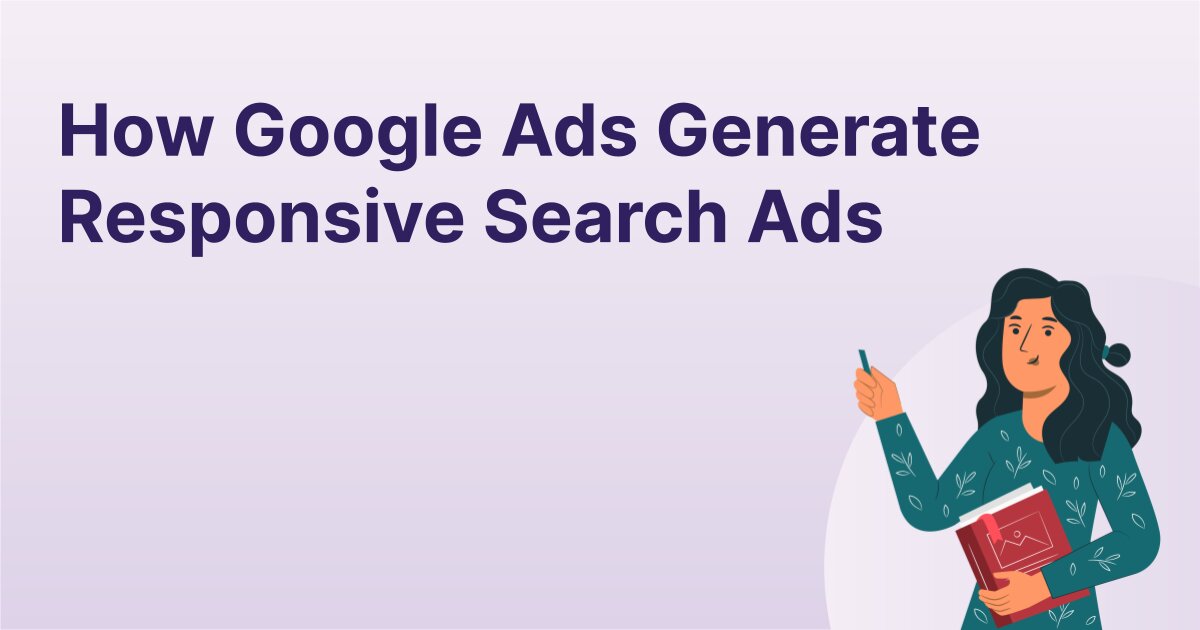Google Ads generates responsive search ads by combining headlines and descriptions to create multiple ad variations. This helps optimize performance through machine learning.
Responsive search ads are a powerful tool in digital advertising. They allow advertisers to input several headlines and descriptions for Google to mix and match. This results in a variety of ad combinations tailored to users’ search queries. The ads adapt dynamically, ensuring the best-performing versions are shown more frequently.
This not only improves ad relevance but also boosts click-through rates and conversions. Marketers save time and effort while reaching a broader audience with more personalized content. Responsive search ads make it easier to test different messaging strategies and enhance overall campaign performance, making them essential for effective online marketing.
Introduction To Responsive Search Ads
Google Ads have changed a lot. They started with simple text ads. Now, they are smarter and more flexible. Google uses machine learning to make ads better. This helps businesses reach more people. Responsive Search Ads are part of this change.
Responsive Search Ads are very important. They can show many different ad combinations. This helps find the best ad for each person. Businesses get more clicks and sales. These ads save time for marketers. They no longer need to make many separate ads. This makes ad campaigns more efficient.

Credit: ppcexpo.com
The Fundamentals Of Responsive Search Ads
Responsive Search Ads use machine learning. They mix and match different headlines and descriptions. This finds the best combination. Advertisers create many headlines and descriptions. Google tests these in various orders. Ads become more relevant over time. This improves performance. More clicks and better results follow.
Responsive ads have three main parts. These are headlines, descriptions, and a final URL. Advertisers provide many options for each. Google then picks the best ones. This helps tailor ads to user searches. More options mean better ads. Better ads lead to higher engagement.
Behind The Scenes: The Algorithm Of Google Ads
Machine learning drives Google Ads. It analyzes user behavior and preferences. Ads are tailored to match user interests. The algorithm learns from user interactions. It constantly improves ad performance. Data is collected in real-time. This data helps in optimizing ads. Machine learning ensures ads are relevant and effective.
Ad Rank determines ad placement. A higher rank means a better position. Quality Score affects Ad Rank. It is based on ad relevance, landing page experience, and expected click-through rate. Better scores lead to lower costs. Relevant ads get higher scores. Google rewards high-quality ads with better positions.
Creating Effective Responsive Search Ads
Use at least five headlines. Make sure each headline is unique. Combine short and long headlines. This helps Google show the best headline. Include keywords in your headlines. This improves ad relevance. Write clear and simple descriptions. Use different lengths for descriptions. This makes ads more adaptable. Test various combinations. Find out what works best.
Do not repeat the same headline. Avoid using vague headlines. Make sure headlines and descriptions are relevant. Avoid using too many keywords. This can make ads look unnatural. Do not ignore ad performance. Always monitor and adjust. Avoid using only long headlines. This can limit ad visibility. Make sure to use all available headline slots. This maximizes ad potential.
Optimizing Your Responsive Search Ads
A/B testing helps find the best ad versions. Create two different versions of your ad. Test them to see which one performs better. Use different headlines and descriptions. This helps understand what works best. Monitor click-through rates and conversions. Change your ads based on the results. Always test one element at a time. This gives clear results.
Ongoing optimization improves ad performance. Regularly check your ad’s performance. Use data to make necessary changes. Update your ads to keep them fresh. Remove low-performing elements. Add new headlines and descriptions. Keep testing new ideas. This helps maintain high performance. Always aim for better results.

Credit: https://www.shiksha.com/
Case Studies And Success Stories
Many businesses saw great results with responsive ads. They used different headlines and descriptions. This helped them reach more people. Some companies got more clicks and sales. Others saw a higher return on investment. The ads helped them target the right audience. This made their campaigns more effective. Businesses found new customers and grew their brand awareness. Responsive ads were a game-changer for many.
Some campaigns did not do well. Businesses learned important lessons. Poor keyword choices hurt their results. Weak headlines did not grab attention. Ads that were not optimized failed. Companies adjusted their strategies. They improved their ad copy and targeting. These changes led to better outcomes. Learning from mistakes helped them succeed in future campaigns.
Frequently Asked Questions
How Does Google Ads Generate Search Ads?
Google Ads generates search ads by analyzing keywords, user intent, and ad relevance. It matches ads with relevant search queries. Advertisers bid on keywords. Ads appear based on bid amount and ad quality.
How Does Google Earth Generate Responsive Search Ads?
Google Earth does not generate responsive search ads. Google Ads handles responsive search ads creation by combining headlines and descriptions to match user queries.
What Is The Difference Between Search Ads And Responsive Search Ads?
Search ads use fixed headlines and descriptions. Responsive search ads dynamically combine multiple headlines and descriptions, optimizing for better performance.
Where Do Google Responsive Display Ads Appear?
Google responsive display ads appear across the Google Display Network. This includes websites, apps, and YouTube.
What Are Responsive Search Ads In Google Ads?
Responsive Search Ads are dynamic ads that adjust headlines and descriptions to show the best combinations to users.
Conclusion
Responsive Search Ads in Google Ads offer flexibility and efficiency. They use AI to craft relevant, personalized ads. By leveraging multiple headlines and descriptions, you can reach a broader audience. Understanding this process can significantly boost your marketing efforts. Stay updated with best practices to maximize your ad performance.
